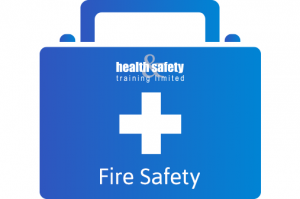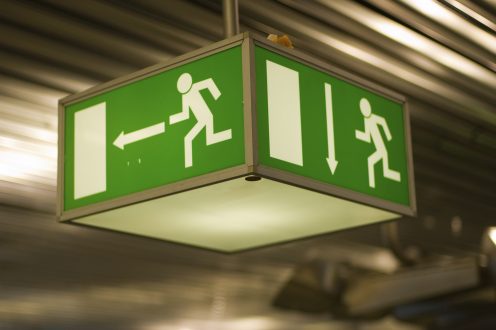The Health and Safety Kit: Fire Safety
 In any environment, whether domestic, commercial or industrial, fire can have devastating effects.
In any environment, whether domestic, commercial or industrial, fire can have devastating effects.
In the six months between April and September 2013, there were 140 fire fatalities in England, and a further 1,664 hospitalised but non-fatal casualties. The majority of these fires will have been preventable, and as an employer or someone who is responsible for a workplace or other public building, you have a legal responsibility to adopt the right procedures, behaviours and policies to prevent an outbreak of fire.
The Hazards
Fires need 3 things to start: oxygen, fuel and ignition. Oxygen is obviously something you can’t control, but the most important thing you can do is keep sources of ignition, e.g. naked flames, lighting, matches, electrical equipment, etc., separate from sources of fuel or combustible materials, such as wood, paper, plastic, furniture, waste materials, etc.
As most fires are accidental, it’s important to uphold good housekeeping that will ensure fire kindling and ignition sources stay separate, things like:
- Avoiding a build-up of rubbish or litter that could act as a fire fuel
- Ensuring electrical equipment is regularly serviced and maintained
- Keeping your fire protection equipment and alarms in good working order
- Keep escape routes clear so as not to cause an obstruction in an emergency
The Law
The legislation covering this area of health and safety law is The Regulatory Reform (Fire Safety) Order 2005, which covers all general fire safety in England and Wales.
In the majority of commercial properties, local fire and rescue authorities are responsible for enforcing fire safety legislation, although there are a few exceptions where the Health and Safety Executive (HSE) has enforcement responsibility, such as on construction sites.
The most important aspect of the legislation is to undertake a fire risk assessment that will identify hazards and dictate your fire protection policy.
Your Responsibilities
Fire Risk Assessment
As the legally responsible person, it is your job to undertake regular fire risk assessments of the property to identify any hazards, take steps to avoid them and establish a plan for emergencies. These are similar to carrying out normal health and safety risk assessments, but with the focus on ignition sources, types of fuel, and fire protection equipment, as well as taking into account any individual hazards for particularly vulnerable people, such as disabled people or children.
Whether you incorporate your fire risk assessment into your health and safety assessment, or have it conducted separately – which is advisable if you are in a particularly high risk environment, such as catering – you’ll need to properly record your findings so you can take appropriate action to limit risk.
You need to ensure any fire risk assessment doesn’t become stagnant, which means it must be reviewed and updated regularly. Most working environments are constantly changing; new staff, new equipment and new layouts all mean new risks and hazards that must be identified and protected against.
Equipment
 The type of fire protection equipment you need will be evident of completion of your risk assessment, and will be different for every property. Some of the most likely equipment you’ll need includes:
The type of fire protection equipment you need will be evident of completion of your risk assessment, and will be different for every property. Some of the most likely equipment you’ll need includes:
- A fire alarm and warning system that covers your entire premises and is capable of warning everyone present, including those who may have a disability that would stop them being able to see or hear the alarm
- Fire extinguishers suitable for the types of hazards identified in your assessment
- Emergency lighting, fire exits signs and specialist fire doors
You’ll need to ensure all your equipment is properly installed and maintained, and if necessary, that your staff are trained to use it.
Training & Drills
As an employer you also have a legal obligation to ensure your workers receive appropriate training. This includes carrying out regular fire drills and training on procedures your staff need to follow in an emergency.
Evacuation Plan
As a result of your fire risk assessment you must formulate an evacuation plan and communicate it clearly to all your staff. This should include:
- Clearly marked, short and direct escape routes
- Enough exits and routes for all occupants of the building
- Easy to open emergency doors
- Adequate emergency lighting
- Escape procedure training for all employees
- A safe meeting point
You’ll also need to take into account any individuals that may have mobility issues in the event of an evacuation and ensure you make special arrangements to facilitate their escape.
Available Training
Here at Health and Safety Training Ltd, we offer a range of general safety courses to keep you, your staff and your business working safely and efficiently, and this includes Fire Awareness Training.
The course is designed to give all learners a basic understanding of fire safety in the workplace, and will prepare them for raising the alarm upon identifying a fire, and using a fire extinguisher.
HST have moved offices to Newcastle The Health and Safety Kit: Manual Handling





